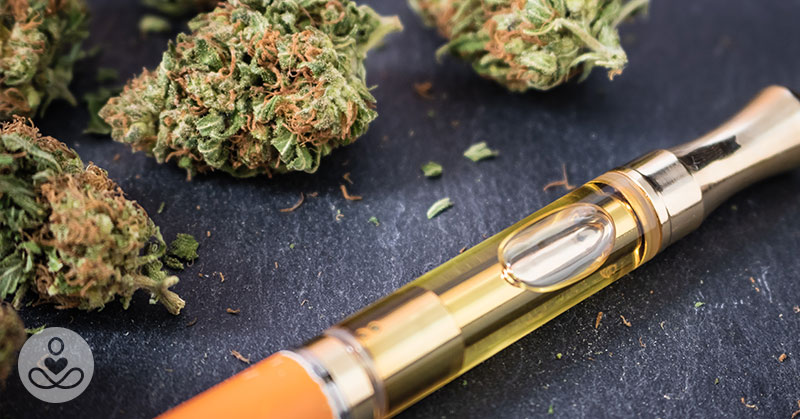The concept of smoking, vaping, or using cannabis edibles is becoming increasingly mainstream. This drug is legal for medical use in 33 states and for recreational use as well in 11 states. However, the current system for classifying illegal drugs is flawed and outdated. Marijuana has been categorized in the restrictive class of “high potential for abuse,” “no currently accepted medical use,” and a “lack of accepted safety.” This restricts patient access to the medicinal drug and proper research. [1]
That is one reason why there’s limited information on marijuana and how it affects the brain.
Some people find consuming cannabis a delightful experience. It relaxes them and makes them feel a good kind of high. For others, the drug may induce anxiety, paranoia, and panic.
The Study of Marijuana’s Effects on the Brain
A Canadian study was published in Scientific Reports, and it is one of the few in existence that explores the “divergent psychological effects” of marijuana’s psychoactive ingredient, tetrahydrocannabinol (THC). The researchers involved discovered an explanation of why both reactions to the drug can occur.
The team used rats as their test subjects and found evidence that the psychological reaction to weed depends on which section of the brain is the most sensitive to THC.
For example, if the anterior (front) of the brain is the most susceptible, the drug will create pleasurable effects. He or she may experience feelings of ease, lessened anxiety, happiness, etc.
If the posterior (back) of the brain is the most sensitive, marijuana can cause negative reactions, such as paranoia and fear.
Steven R. Laviolette, PhD, and one of the study’s researchers explains that the study has embarked on new territory.
“There is not too much known about why there are such differences in response to THC,” says Laviolette. “We know a lot about the long-term and short-term effects… But there is very little known about the specific areas in the brain that are responsible for independently controlling those effects.”
Therefore, this study is particularly vital to understanding marijuana.
“It’s a very new finding,” Laviolette says. [2]
This research, led by Christopher Norris, PhD, is not only a breakthrough for science but a form of validation for people who had negative experiences with the drug while the people around them had a great time. Sometimes the bad effects go beyond unpleasant emotions; some individuals endure “schizophrenia-like” symptoms.
An Earlier Study of Reactions to Marijuana
A study from Oxford suggests behavior traits such as low self-esteem, worrying, and anxiety could play a role in the effects of cannabis.
All 121 of the participants reported mistrustful thinking in their daily lives and had used cannabis at least once before. None had a history of mental illness or relevant health conditions. The results showed 1 in 5 participants had an increase in paranoia directly related to the THC. The paranoia lessened as the drug left the blood-stream.
“The study very convincingly shows that cannabis can cause short-term paranoia in some people,” says Professor Daniel Freeman, leader of the research team. “But more importantly it shines a light on the way our mind encourages paranoia. Paranoia is likely to occur when we are worried, think negatively about ourselves, and experience unsettling changes in our perceptions.” [3]
This seems to contradict Norris and Laviolette’s study, which suggests the reaction is beyond a person’s control; perhaps it depends on genetics. For those who had a bad reaction from the drug, this 2014 study is a source of hope of one day enjoying the marijuana high.
How Does This Study Help Today?
“Once we figure out what molecular pathways are causing those effects in different areas, then in the long-term we can work on modulating THC formulations so they don’t activate those specific pathways,” Laviolette says. “That’s the really long-term goal of what we’re trying to do here.”
Norris, Laviolette, and the rest of the team plan to replicate these results in the human brain, but there is a long way until that could be fully achieved.
For now, the researchers hope this trial would educate marijuana users and allow them to make decisions according to their own needs.
“Be aware that we’re starting to unravel some of the more intricate details of how cannabis is affecting the brain,” Laviolette concludes. “Monitor your use and if you’re experiencing negative side effects, talk to your physician.”
Sources
- Drug Policy Alliance. Removing Marijuana from the Schedule of Controlled Substances https://www.drugpolicy.org/resource/removing-marijuana-schedule-controlled-substances January 10, 2019
- Christopher Norris, Steven R. Laviolette, Hanna J. Szkudlarek, Brian Pereria, Walter Rushlow. The Bivalent Rewarding and Aversive properties of Δ9-tetrahydrocannabinol are Mediated Through Dissociable Opioid Receptor Substrates and Neuronal Modulation Mechanisms in Distinct Striatal Sub-Regions https://www.nature.com/articles/s41598-019-46215-7 January 5, 2019
- University of Oxford. How cannabis causes paranoia https://www.ox.ac.uk/news/2014-07-16-how-cannabis-causes-paranoia

